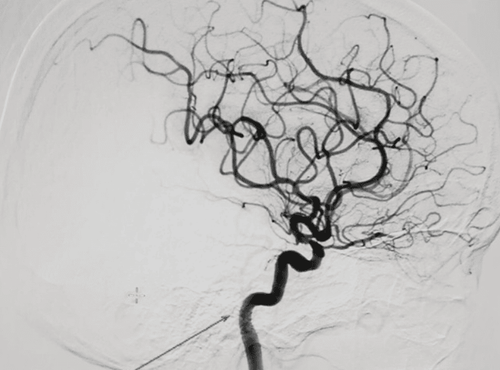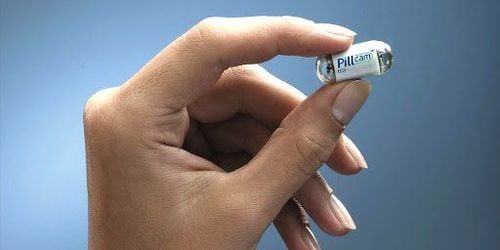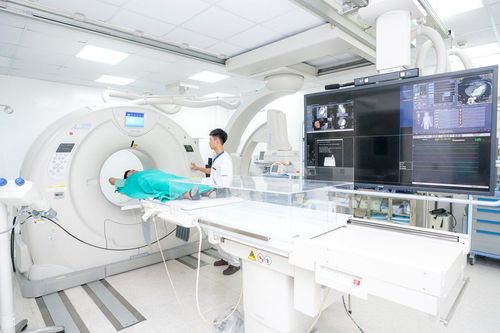This is an automatically translated article.
Article by Resident Doctor, Master Nguyen Van Anh - Doctor of Radiology - Department of Diagnostic Imaging and Nuclear Medicine - Vinmec Times City International Hospital
Cancer is a dangerous disease and increases the risk of death. Early examination and screening will give a good chance of treating the disease, even some cancers have a chance to be cured. Diagnostic imaging is the most important means for doctors to perform examinations and detect the risk of cancer even when there are no symptoms.
1. The role of imaging in cancer diagnosis and treatment
Cancer is now one of the leading global health concerns. In general, the incidence and mortality from cancer is increasing rapidly in the world. According to GLOBOCAN statistics in 2020, the world has more than 19 million new cases and nearly 10 million deaths from cancer. In Vietnam, it is estimated that there will be 182,563 new cases and 122,690 cancer deaths in 2020. Early and accurate screening and diagnosis is an important key in cancer prognosis and treatment. .
One of the means that plays a key role in cancer management is imaging. Recently, along with the development and support of science and technology, especially the strong development of artificial intelligence, diagnostic imaging tools are increasingly showing an important role in screening. , early diagnosis, monitoring and treatment of these diseases. In this article, we will give readers an overview of imaging techniques and their role in cancer management that have been and are being applied in the medical system. Vinmec economy.
Trắc nghiệm: Thử hiểu biết của bạn về bệnh ung thư
Ung thư là nguyên nhân gây tử vong hàng thứ 2 trên thế giới. Thử sức cùng bài trắc nghiệm sau đây sẽ giúp bạn có thêm kiến thức về yếu tố nguy cơ cũng như cách phòng ngừa bệnh ung thư.
Bài dịch từ: webmd.com
2. Diagnostic imaging tools for cancer screening
Currently, besides basic imaging techniques such as X-ray, ultrasound, computed tomography and magnetic resonance, Vinmec also develops advanced techniques such as digital erasure angiography (DSA) and other techniques. nuclear medicine such as PET/CT, SPECT/CT.
2.1. X-ray
This is the oldest and most basic technique of diagnostic imaging. X-rays are a form of electromagnetic radiation, similar to visible light. However, unlike visible light, X-rays are higher in energy and can pass through most objects. The ability of X-rays to "penetrate" through different components (such as fat, fluid, air bone...) is different and the results will show up in images with different densities. From there, it is possible to observe the internal structures of the body.
With advantages such as low cost, maneuverability, availability, speed and repeatability, X-ray is still used as a means of cancer screening in periodic health check-ups such as Chest X-ray to screen for lung cancer , mamography periodically to screen for breast cancer in women over 40 years old. Besides, also for monitoring after treatment such as chest X-ray to monitor tumor size, pleural effusion. The mobility of the X-ray machine also allows the machine to be brought to the hospital bed to take pictures without having to move seriously ill patients.
In addition to radiographic techniques alone, noninvasive (without using contrast agents), radiographic techniques combined with oral, intravenous, or fistula contrast agents. Real-time X-ray helps to "reveal" the image more clearly, helping to evaluate the function of some organs and organs in the body. Currently at Vinmec, in the survey of a number of diseases such as gastroesophageal reflux disease, assessment of congenital abnormalities of the gastrointestinal tract in children (gastroduodenal, colon...), death survey Fallopian tubes in women, radiographs with contrast are still used as an economical, effective means of reducing the patient's radiation dose compared to other methods (eg, microscopic tomography). calculation - CVT).
Although, there are limitations such as the amount of image information is not as much as that of modern means (magnetic resonance, CT), exposure to X-rays, this method still retains its value today. in some cancer screenings (especially breast cancer) and in the diagnosis of certain conditions as outlined above.
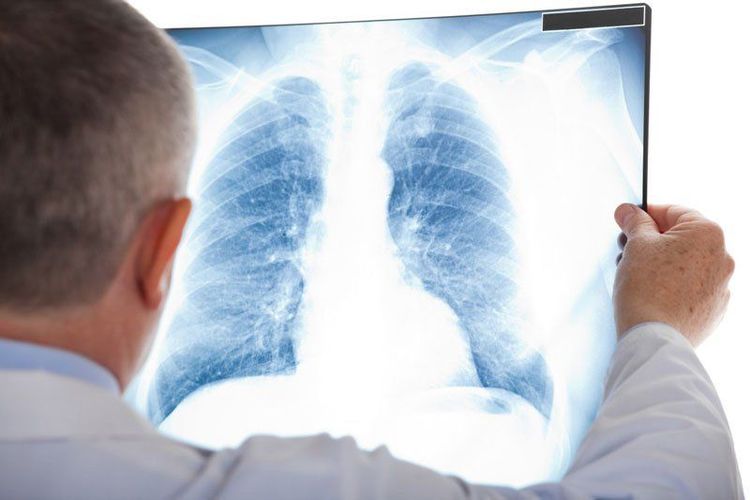
2.2. Supersonic
Ultrasound is considered as the most "dynamic" technique in diagnostic imaging with many advantages such as widespread popularity, compactness, ease of application, real-time recording, and low cost. In particular, no radiation exposure - radioactive and can be repeated many times. The basic principle of ultrasound is based on ultrasonic waves - a type of sound wave with a frequency higher than the limit of human hearing. This type of wave is emitted from the transducer, penetrates the body, collides with internal tissues and returns to the transducer with different frequencies depending on the properties of each organ-tissue. which is then encoded into an image.
Ultrasound is currently the first screening tool for thyroid diseases, mammography (in combination with mammography), heart and peripheral vascular diseases. Besides, it is also indispensable to have ultrasound of the abdomen and pelvis in health examination and early cancer screening. With a 10- to 30-minute abdomino-pelvic ultrasound examination, the patient can be examined most of the solid abdominal organs such as liver, spleen, kidney, pancreas, and male internal genitalia. (prostate) and female (uterus-fallopian tubes). Simultaneously detecting tumors of these organs and a number of diseases of kidney stones, gallstones, cysts... At Vinmec, there is a system of ultrasound machines with the most modern and latest models today from manufacturers. With large machines such as GE, Siemens, Hitachi, the obtained ultrasound images are clear and of sufficient quality, helping to bring back accurate images and diagnose more accurately, sooner for patients.
In addition to diagnostic value, ultrasound is also used as an effective guide in tumor biopsies, aspiration, cytology, drainage and performing some disease treatment techniques. At Vinmec, ultrasound-guided interventions are being widely and variedly performed by experienced doctors and specialists such as breast biopsies, thyroid cell aspiration, biopsies of other solid organ tumors, treatment of thyroid tumors by RFA waves, aspiration of cysts, drainage of outbreaks, treatment of varicose veins of the extremities by heating, cosmetic sclerotherapy of varicose veins...
2.3. Computed tomography (CLVT)
This is a modern technique, with the same principle of using X-rays to create natural images for a huge and more accurate information supply. The limitation of CT scan is that the radiation dose is much higher than that of conventional X-ray, so the benefits and risks need to be weighed in the indications for CT scan. However, recently, modern CT scanners have added technologies to reduce the maximum dose, so that the application in periodical health check-up is gradually included in the national program. In the US, low-dose CT (LDCT, Low-dose CT) on the lungs has been widely used in subjects with high risk factors for lung cancer, specifically recommending computed tomography lung scan for lung cancer. 55-74 year olds who have smoked or are smoking for more than 15 years.
Currently, Vinmec has also been implementing low-dose CT lung scan to screen for lung cancer in high-risk adults and has helped detect many small lung tumors at a very early stage that is difficult to detect. detected on conventional chest radiographs, contributing to improving treatment prognosis and treatment costs for patients.
With a multi-sequence CT scan system from 256 to 512 and 640 ranges at Vinmec, taking CT scans quickly, reduces the dose of rays and gives very good image quality, helping doctors evaluate and make an accurate diagnosis. than. One of the new applications of the modern multi-sequence CT system is to take full-body CT scan. With fast scanning time, whole-body CT is a new, modern, non-invasive technique that provides a huge amount of information about internal organs in the skull, chest, abdomen, pelvis, and spine. . Thereby, helping doctors quickly and effectively screen tumors in most parts of the body, helping to assess the overall response to treatment in cancer patients, especially at the metastatic stage. However, because the "whole body" is taken, this technique exposes the patient to more radiation or radiation exposure than just one part (such as the chest or abdomen). Therefore, these indications need to be evaluated by the clinician and weigh the risk factors - benefits before implementation.
In addition, dual-energy CT scan is a new technique and is being implemented at Vinmec, applied in some pathologies that need to evaluate stone properties and crystal composition in Gout disease, helping to differentiate between tumors and other lesions. CT perfusion is also a new technique and has great applications in the assessment of early cerebrovascular accidents, some other diseases related to tissue perfusion.
In the elderly and with cardiovascular risk factors, CT coronary angiography to screen for diseases of the blood vessels supplying the heart is also recommended. However, the indication for imaging is up to the cardiologist, after having enough clinical data.
In addition to diagnostic applications, CT is also used as a guide in interventional biopsies of tumors in the lungs, bones, and organs; therapeutic intervention in vertebral collapse and some other diseases.
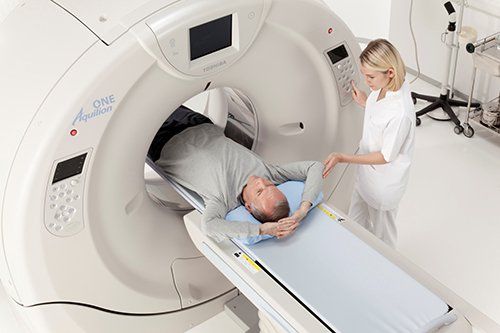
2.4. Magnetic Resonance (CHT)
This is a modern technique, born later than other techniques but brings great diagnostic value. The principle is to use a giant magnet block (20,000 - 25,000 times stronger than the earth's magnetic field) to record images, creating resonances on H + protons present in the body's tissues. In addition, since no X-rays are used, it is a technique without radiation exposure (like ultrasound). The limitation of the technique is that the survey is limited to gaseous components (lungs) or calcium (bones) because there is no H+ proton, but conversely because of the good tissue resolution, magnetic resonance imaging of organs such as the brain, joints, breasts, biliary system, pelvis are very good and these applications are more and more widely used in diagnosis.
In addition, MRI is limited due to the long imaging time, requiring the patient to be fixed for a long time, so it is difficult to take pictures for convulsive patients and children. In particular, because of the large magnetic field, it is contraindicated for patients carrying magnetic materials in the body (such as pacemakers, metal prostheses...).
Currently at Vinmec, with a system of 3 3 Tesla magnetic resonance machines and 1 1.5 Tesla magnetic resonance machine, these machines bring beautiful image quality, many modern applications in diagnosis. For cancer pathologies, similar to CT, MRI helps to detect tumors, assess the characteristics and composition of tumors, with high spatial resolution, MRI is even capable of detecting tumors. The tumor is smaller and more inconspicuous than with CT.
Particularly in the field of disease screening, cranial-cerebrovascular magnetic resonance is being gradually included in the screening program at Vinmec with the goal of finding early abnormalities in cerebral blood vessels. In particular, Magnetic Resonance is a "super" technique when it is possible to record cerebral blood vessels without the need for contrast injection. This technique has also been applied in Japan and has really done a good job of screening and reducing the rate of stroke in young people in Japan.
2.5. Angiography and digital endovascular intervention (DSA)
This is a new high technique, which has been widely applied in Vietnam in the past 10 years. The principle of this technique is to use X-rays and fluorescent light to take angiograms at the necessary locations before and after the injection of contrast material into the blood vessels to be imaged. The computer then blurs the background image, obtaining a full picture of the heart, carotid artery, abdomen, chest, and thighs - clarifying the vascular system.
In addition to the role in the diagnosis of some diseases related to blood vessels (such as cerebral stroke, vascular malformation, assessment of vascular circulation), DSA also has a new and important role in the assessment and management of blood vessels. treat tumors. Specifically, the DSA technique helps to assess the blood supply to the tumor, thereby helping to plan treatment and approach tumor treatment more effectively.
DSA helps to treat tumors through blockage of tumor feeding vessels, injecting chemicals directly into the tumor through feeding vessels, especially liver, kidney, uterine tumors, retinoblastoma.. Currently, with a modern DSA system and a team of experienced interventionists with the support of some leading experts, Vinmec has fully implemented DSA's new techniques in diagnosis and treatment. treatment of cancer as well as other diseases.
Other extravascular interventions:
Biliary drainage / stenting: in the treatment of biliary dilatation due to tumors of the biliary tract or pancreatic head. Placing a pyelonephritis in the treatment of cancer-induced urinary tract dilatation. Interventional radiofrequency ablation: in the treatment of liver, lung, and thyroid tumors. Interventions to relieve pain in cancer: alcohol injection, cryotherapy, nerve root blockade, sympathetic ganglia. Vacuum aspiration to remove tumors in the treatment of benign breast tumors. ...
2.6. Nuclear Medicine (SPECT/CT, PET/CT)
With the great progress of medicine, now nuclear medicine has been applied a lot to the diagnosis and treatment of different diseases such as: early diagnosis, stage assessment, genetic assessment etiology, recurrence, assessment of response to treatment in cancer. Diagnosis and functional evaluation of kidney, digestive, cardiovascular, neurological, musculoskeletal, endocrine, and even pediatric diseases. In cases of differentiated thyroid cancer after surgery, pain caused by bone metastases, and basedow's disease, nuclear medicine can also be applied to diagnose and treat the disease. And most of all, this treatment helps with early, accurate diagnosis that has yielded very impressive results.
At the current Vinmec medical system, along with the investment in modern equipment and the application of new technologies in diagnosis, we also have a team of experts - experienced doctors. in the field of medical radiology, has contributed to bringing high efficiency in the diagnosis and treatment of diseases, especially cancer.
Please dial HOTLINE for more information or register for an appointment HERE. Download MyVinmec app to make appointments faster and to manage your bookings easily.
References:
https://acsjournals.onlinelibrary.wiley.com/doi/full/10.3322/caac.21660
https://moh.gov.vn/hoat-dong-cua-dia-phuong/- /asset_publisher/gHbla8vOQDuS/content/tinh-hinh-ung-thu-tai-viet-nam
https://www.vinmec.com/vi/tin-tuc/thong-tin-suc-khoe/y-hoc-hat -nhan/?link_type=related_posts
https://www.vinmec.com/en/tin-tuc/thong-tin-suc-khoe/suc-khoe-tong-quat/cac-nguyen-ly-cua-chup- mach-so-hoa-xoa-nen-dsa/
https://www.ncbi.nlm.nih.gov/pmc/articles/PMC5527766/







